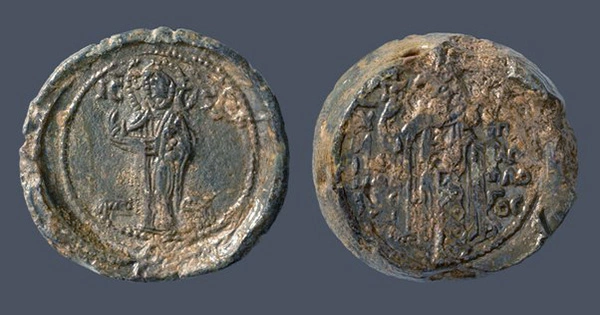SN 1054 must have been a spectacular supernova. At first, it could be seen in the sky for about two years, including throughout the day. Only eight known supernovae in the Milky Way have written accounts unearthed in the past, and now researchers think they have found a reference to one of them concealed on a coin.
On July 4th, 1054 CE, the supernova first appeared and was visible for 23 days and 653 nights. Hundreds of years later, it would be “found” and cataloged numerous times, yet at the time, Chinese, Japanese, and Islamic astronomers had already recorded it.
However, despite the fact that they would have definitely been able to see it too, there is an odd lack of mention in any Byzantine sources.
Researchers claim in a paper published in the European Journal of Science and Theology that an extra star on a coin from this time period does, in fact, depict the supernova; however, including something astronomical at a time when the Byzantine Empire was predominately Christian is thought to be heretical.
The team examined 36 coins produced between 1042 and 1055 CE under the rule of Constantine IX. The Emperor’s head is flanked by a single star on three of the coins, while two stars are visible on the fourth. They think the second one alludes to the explosion. It might also be a reference to the Great Schism, which was the split between the Eastern Orthodox Church and the Roman Catholic Church.
Therefore, this is a tale of political intrigue as well as religious intrigue and scientific discovery.
The supernova was then referred to as a “guest star” (kè xing), but today we call it the Crab Nebula. The specifics of this event are described in Chinese astronomy. Islamic scholars have discussed it in their writings. Even a pictograph from the Ancestral Puebloan culture and the oral history of the Aboriginal people in the area surrounding Ooldea may contain references. However, there isn’t much from Europe.
Historians are baffled by this. Although brighter, the supernova of 1006 was extensively covered in writings. Unlike the one from 1054, though. The Great Schism is one of the most likely candidates for an explanation; after all, Michael I Cerularius, the Patriarch of Constantinople, was excommunicated on July 16, the day the supernova was at its brightest.
The instability that surrounded the Schism and the Church’s position that the heavens were unchangeable both probably contributed significantly to the lack of reports of the supernova throughout Europe. The coin, according to the publication, is a not-so-subtle attack on the Catholic Church.
The team proposed that the coin represents the emperor as the Sun, Venus, the Orthodox Church’s star, as the star in the East, and SN 1054, the Catholic Church’s star in the West, which was formerly bright but is now fading, as it was visible on opposing sides of the Sun in the summer of 1054 CE.
The coin is an unique find, and the notion that it portrays the supernova is an intriguing one, but it is far from proof positive, and it doesn’t explain why it wasn’t recorded anywhere in Europe at the time. But we still do it today, so the coin manufacturers wouldn’t be the first to smuggle a message into something that seems harmless.
















